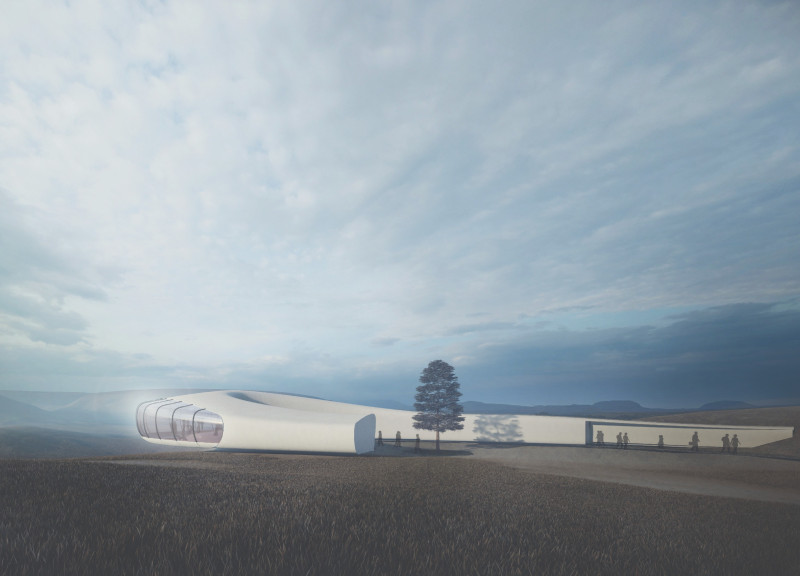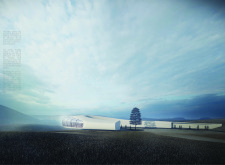5 key facts about this project
The design is set against a landscape defined by the Dimmuborgir Lava Field, Hverfjall Volcano, and Myvatn Lake, aiming to connect the structure closely with its surroundings. The goal is to create a building that serves multiple functions while respecting the natural environment. The emphasis is on reducing the visual impact of the design, allowing the area's unique features to take precedence. The concept encourages visitors to appreciate the striking geological landscape while engaging with the architectural space.
Design Approach
The entryway is fundamental to the design, providing a transition from the outside world to the interior. As visitors approach, the building guides them through a compressed space that builds anticipation. Inside, the observation room becomes a centerpiece, revealing wide views of the natural beauty surrounding it. This connection to the landscape is central to the experience, allowing the architecture to frame the scenery rather than compete with it.
Spatial Organization
The layout of the building is structured to accommodate various activities and promote ease of movement. Key areas include a main entry, office space, storage, shop, restrooms, exhibit rooms, an observation area, café, kitchen, and terrace. This organization not only improves accessibility but also creates a logical flow between spaces, facilitating a comfortable environment for visitors and staff alike.
Material Considerations
Materials used in the construction play an important role in both the building's function and its environmental compatibility. Significant elements include a moisture retention layer, engineered soil, and a vegetated roof, which all contribute to sustainability. The use of white oak flooring and concrete enhances the durability while providing a warm aesthetic. These choices help the building respond well to its surrounding landscape.
Natural Integration
The design promotes a strong relationship between the interior and exterior, highlighting the natural environment. By merging architectural elements with the landscape, the experience for visitors becomes more immersive and engaging. Large windows and open spaces allow natural light to flood the interior, directly connecting people with the vibrant outside world. This design approach encourages a deeper appreciation of the geological features that define the site.






















































